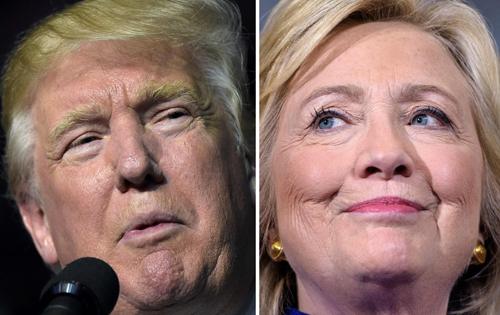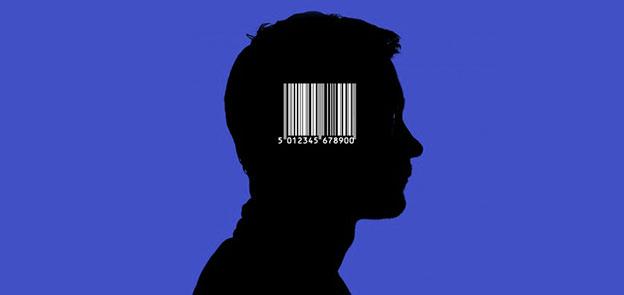You are here
Virtual briefing explores role of TV advertisements, social media in US elections
By Bahaa Al Deen Al Nawas - Oct 19,2020 - Last updated at Oct 19,2020
AMMAN — The advent of social media introduced changes to presidential campaigns, but in terms of content, many things have stayed the same, said contributing editor to Politico Magazine, Joanna Weiss, who has covered media in every presidential campaign since 2004.
Weiss delivered her remarks as part of a virtual briefing titled, “Overview of Role of TV Advertisements and Social Media”, which is part of the “Elections 2020: A Virtual Reporting Tour of the United States and the American Electoral Process”, held and organised by the Foreign Press Centres at the US Department of State — Bureau of Global Public Affairs.
On every level of elections, from people running for town council to candidates running for president, advertising is paid for by candidates, and there is no state TV that provides any free space for ads, Weiss said.
She said that some ads are paid for by the campaigns themselves, and some by third party groups, including political action committees known as “super PACs”, which are set up to support a candidate or a cause, but are not run by the campaign nor are supposed to coordinate with it, with no fundraising restrictions, allowing them to pour a lot of money into advertising as well.
“So in some cases, basically there are limits to how much money you can raise, but there are no limits to how much money you can spend on advertising. And this is a big country and you can spend a lot of money on advertising because advertising is the best way to reach a lot of people, and it’s gotten much, much more sophisticated over the years in terms of tactics and targeting,” Weiss said.
However, in terms of content, Weiss said it all comes to down to emotion, and the emotion that is often play to, is fear.
Weiss played an ad from 1964 for the campaign of Lyndon Johnson, who was the vice president of John F Kennedy, assassinated in 1963, and the opponent at the time was the Republican Barry Goldwater, who Weiss said favoured very active and aggressive military.
The video shows a little girl in a flower field, plucking a flower and counting numbers until an automated voice counts backwards from 10 to zero before everything explodes, with Johnson’s voice at the end saying: “These are the stakes. You’ll make a world in which all of God’s children can live, or to go into the dark. We must either love each other or we must die. Vote for president Johnson on November 3rd. The stakes are too high for you to stay home.”
“This is not, as you could see, an ad about foreign policy, this is an ad about emotion and it used the sophisticated filmmaking techniques, a lot of work went into the sound editing of that ad. A really interesting thing about that ad is that it ran on television exactly one time, just once, and people went into such a panic and politicians complained, and the Johnson campaign pulled the ad,” Weiss said.
She added: “But the ad gave the campaign what campaigns know as earned media, which means that TV shows and newspaper columnists are talking about your message and sometimes replaying your message and repeating your message and you don’t have to pay for it. And Lyndon Johnson won by a huge margin in that election.”
Weiss played another video for the campaign of President Ronald Reagan’s reelection campaign in 1984, which shows images of prosperity and hope among Americans, which Weiss said showed very little of the ethnic diversity in the country, appealing to a certain demographic.
“Reagan’s poll numbers were actually fairly low when that ad came out. The nation’s economy was not as good as the ad suggested, there was a big deficit, but the ad created a mood of hope, and a lot of historians think that it helped Reagan win reelection,” the briefer noted.
Weiss played an ad by Hillary Clinton’s campaign when she ran in the primary against Barack Obama, which she said Clinton used to show she had more experience than Obama, as they were both running for the Democratic presidential nomination.
The ad shows children asleep at 3am, a phone is ringing and the voiceover tells viewers that their children are asleep and safe, but something is happening in the world, asking them who they want to pick up the phone, which Weiss said is still part of American culture, as they still ask each other who they want to pick up the phone at 3am.
“One of the reasons that the Obama campaign did very well in 2008 was because it was one of the first presidential campaigns ever to make use of a platform called Facebook. Facebook was founded in 2004. It was a relatively new tool still in 2008, but one of Barack Obama’s key strategists was one of the founders of Facebook and he and others helped the campaign understand how to use this platform as an organising tool that campaigns had never before had a tool that they could use to engage voters so effectively, and a communications tool,” Weiss said, noting that media outlets at the time, realising how important that was, called it “the Facebook election”.
In 2016, Donald Trump used Twitter in a different way, bypassing the media and sending his messages directly to the people, “more effectively than any other candidate”, Weiss said.
She added: “He obviously is still doing that when he is president, he tweets all day and all night, lots of all caps, lots of exclamation marks, even when he’s in the hospital.”
“Donald Trump was a master of Facebook as well in 2016. He actually used it to generate most of the $250 million in online fundraising that his campaign received, that was almost entirely through Facebook,” Weiss said, noting that also in 2016, the Trump campaign spent the higher percentage of the advertising budget on digital advertising overall than the Clinton campaign did.
Therefore, the transition went from spending on TV ads, which Weiss said are very expensive, to spending more and more on digital ads, noting that those use targeting tools, unlike paying for a TV ad and hoping it will reach the right audience and be effective.
“In this case, you can see the demographics that it reaches. You can also see that it’s mainly running in swing States. You can run an ad that could be to gun owners in Georgia or an ad that reaches only women 25 to 44, or you could reach women age 25 to 44 who live in Georgia and own guns,” Weiss said.
“Because of the data that we share with Facebook every day, just by virtue of the things that we like, the things that we write about, the things that we share, Facebook has a tremendous amount of demographic information, and these campaigns use it to great effect,” she noted.
Weiss highlighted a rumour that spread about Joe Biden very recently, saying he used an earpiece during the debate, which the Trump campaign capitalised on by creating an ad with a Photoshopped image of the candidate wearing an air pod. She added that more dangerous accusations have been made and spread on social media as well.
Related Articles
AMMAN — Candidates in the upcoming parliamentary elections are using social media to reach out to voters, reducing the amount of funds spent
CINCINNATI, Ohio — With one week to go until Election Day, Hillary Clinton and Donald Trump were barnstorming battleground states Tuesday, a
PARIS — Do you prefer organic food? Did you study in Mexico? Do you like red shoes?



















